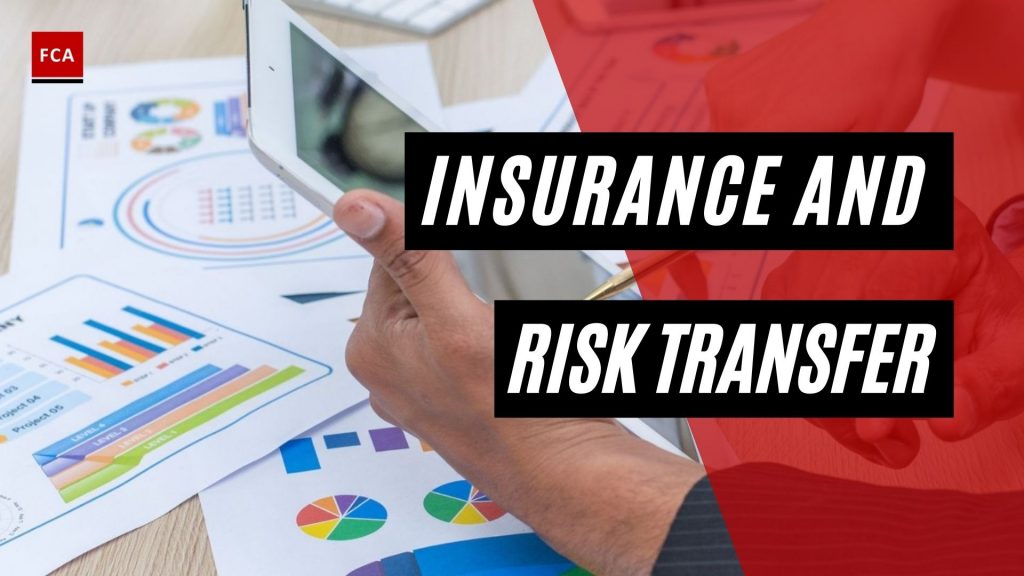The insurance and risk transfer. After performing risk assessment, including the development and application of controls, management identifies those risks which are outside the risk appetite and tolerance levels. These risks are considered critical risks, and the occurrence of such risks may lead to the closure of the business or extreme level negative impact on the profitability and reputation of the organization.
The Insurance And Risk Transfer
In such cases, the management may decide to transfer the risks to a third party that provides services to minimize risk impacts. Insurance companies usually provide these third-party services.
Organizations prepare their internal risk, and insurance policies and procedures, where critical functions, assets, and technologies are insured, and the process of obtaining insurance is laid down in those policies and procedures. Such arrangements may enable the organization to minimize the impact of risk incidents if they happen.

What Is A Risk Transfer?
Risk transfer is a risk management and control strategy that requires contractual transfer of potential risks to a third party. Insurance is a contractual arrangement between the insurance company and the organization, where the insurance company enters into a risk transfer arrangement with the organization for particular assets. The insurance company acts as the insurer, and the organization whose assets are insured is the insured.
Organizations are exposed to different types of risks for which decisions should be taken regarding retention and transfer of risks. In case the organization has developed robust internal controls to mitigate the risks, then the risks may not be transferred to another third party, but if the risks are of such types where transferring them to another party is necessary, then organizations may consider transferring the risks. An example of transferring financial risks related to asset damage is to get all the assets insured from the insurance company.
Risk transfer requires an appropriate assessment of the risks because, based on risk assessment, the management may take appropriate decisions regarding the assets that need to be insured.
Organizations transfer enterprise risks by entering into Insurance arrangements. The cash management function of the company may be insured so that if the enterprise occurs and cash is embezzled, then the organization may be compensated for the loss. Through risk transfer, the organization reduces or eliminates the potential impact of the risks. Risk transfer incurs a cost to the organization, but the cost should be lower as compared to the potential impact of the particular risk. The senior management must take risk transfer decisions considering the cost and benefit of risk transfer.
What Is A Insurance?
Insurance arrangements are made by organizations to bear the possible losses occurring due to the damages of the assets. Different organizations have different types of assets which are used to run business affairs, and such assets require protection in case of hazards and damages.
These assets include buildings, properties, equipment, computers, laptops, and even furniture, among others. As a large number of funds are invested by an organization in such assets, there is a possibility of losing such assets caused by unforeseen risks such as natural disaster risks, mob attack risks on the premises of the organization, flood or fire incidents.
Insurance arrangement can incur some cost to the organizations, but the benefits are higher than the insurance cost. As assets are insured, management’s risk of losing money invested in assets is transferred to the insurance company. Not all assets could be insured, but the organization may identify significant value assets and cover them through third-party insurance services.
Risk management practices suggest organizations cover risks of the assets through the insurance arrangements, and these arrangements are treated as appropriate mitigants against the risk of losing the assets causing financial losses.
Risk Transfer By Insurance Companies
Although risk is typically transferred from individuals and entities to insurance companies, insurers can also transfer risk. This is accomplished through the use of an insurance policy with reinsurance companies. Companies that provide insurance to insurance companies are known as reinsurance companies.
Insurance companies can shift risk by purchasing insurance from reinsurance companies in the same way that individuals or entities purchase insurance from insurance companies. Reinsurance companies charge insurance companies an insurance premium in exchange for taking on this risk.
Final Thoughts
Risk transfer is a common risk management technique in which the potential loss from an unfavorable outcome is transferred to a third party. To compensate the third party for bearing the risk, the individual or entity will usually make periodic payments to the third party.
Insurance is the most common example of risk transfer. When a person or company buys insurance, they are insuring themselves against financial risks. For example, when a person buys car insurance, he or she is purchasing financial protection against physical damage or bodily harm that may occur as a result of a traffic accident.








